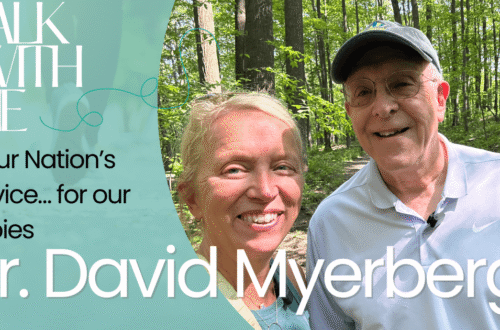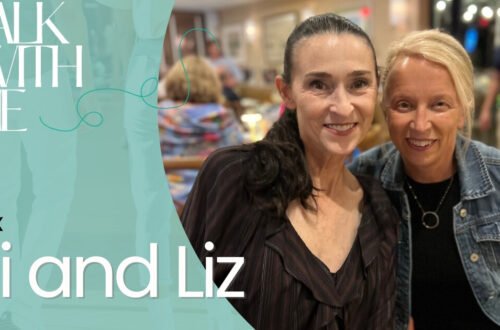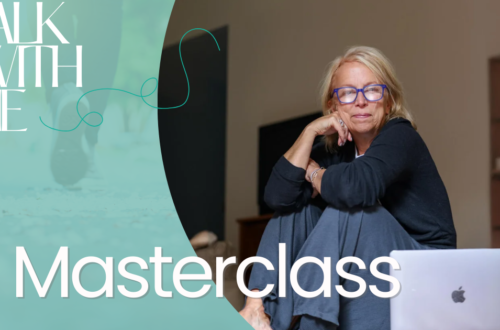A Special Detour Q/A with Liz Hofreuter & Carole Ann Al-Din
Ever notice how a good walk can clear your head? There’s something about that rhythm—left foot, right foot—that seems to untangle our thoughts. That’s no accident.
Back in 1987, psychologist Francine Shapiro discovered something fascinating during a walk. As her eyes moved back and forth while processing a troubling memory, she noticed her distress decreasing. That simple observation eventually became EMDR therapy, now one of our most effective trauma treatments.
Given the nature of Walk with Me, I’ve been thinking a lot about this connection, so I wanted to learn more about it. I turned to the person who first introduced me to EMDR, Carole Ann Aldin.
Our Q/A reminds me that healing is about movement, rhythm, and the courage to walk through our stories in the safety of someone who truly sees us.
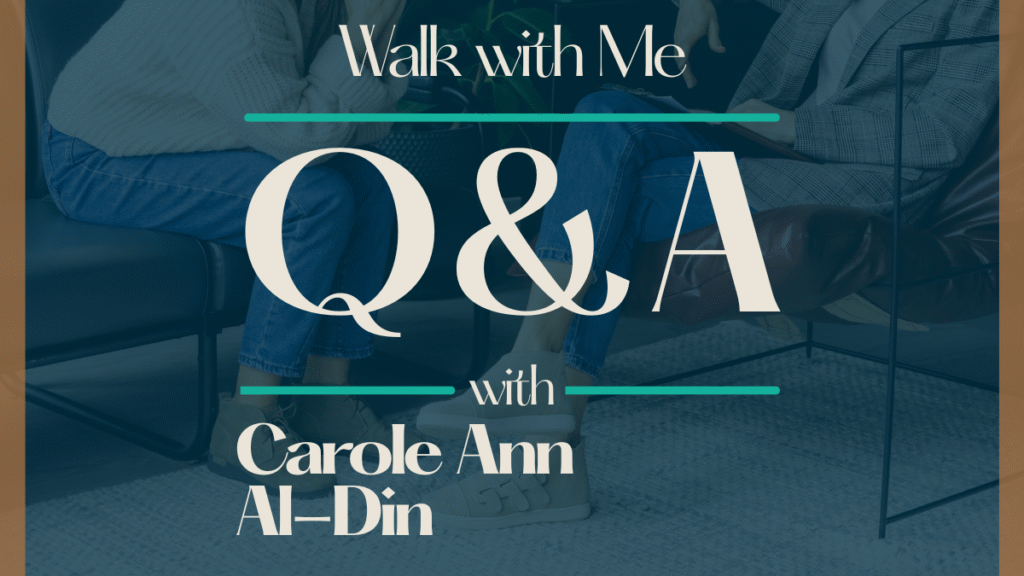
Carole Ann Aldin: EMDR stands for eye movement desensitization reprocessing. It was discovered by a woman named Francine Shapiro. Apparently, she had cancer a number of years earlier in the ’70s, so she got into mind-body healing. She was researching how our physical symptoms are related to our emotional life. She was working on her dissertation for a PhD in Clinical Psychology, so there was something in her mind that she was trying to think about, which was maybe troubling to her. She went out, going to a lake or park and walking. She noticed when she came back that her mind was clear and she was calm. Because she was mindful and using herself as a laboratory, she was curious about that. So she went out again and noticed that when she was walking, her eyes were moving back and forth or on a diagonal. And so she was thinking it might have something to do with her eyes. And so when she came back, and over time, she started using a hand motion to create something that would have the eyes moving back and forth and on a diagonal.
Liz Hofreuter: So why does the eye dart when you walk?
Carole Ann: I guess it’s just our movement, especially if you’re looking at trees, right? You’re walking and the eyes are just taking it in. And that’s how it is- they’re moving.
Liz: More so than when we sit and talk.
Carole Ann: Exactly.
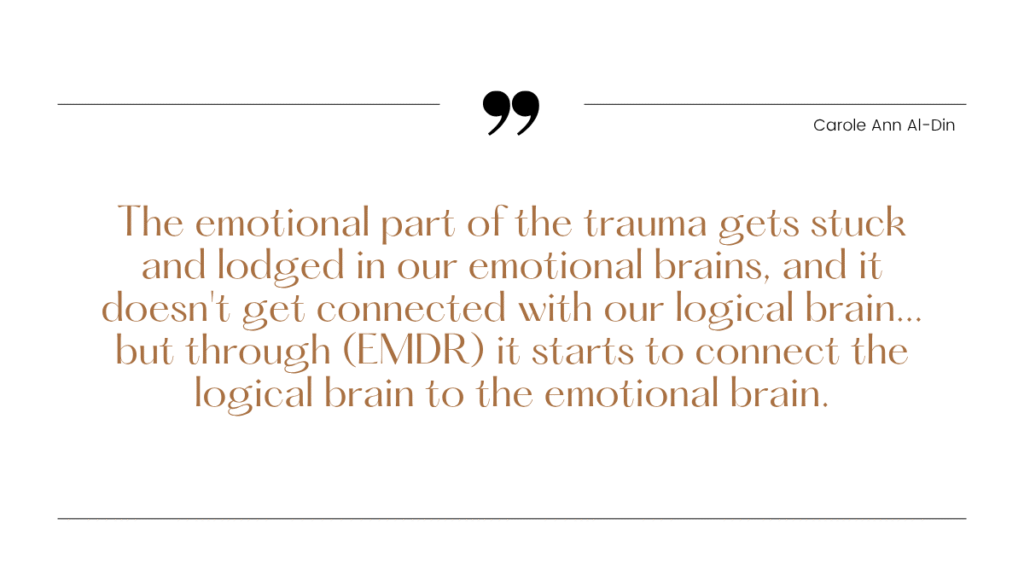
Carole Ann: The emotional part of the trauma gets stuck and lodged in our emotional brains, and it doesn’t get connected with our logical brain. And trauma can be small traumas, big traumas and what this process does, it doesn’t erase the memory of the trauma, but through the process it starts to connect the logical brain to the emotional brain, so we could get informed differently.
We are one body. We’re body, speech, and mind. So trauma gets lodged in us neurologically. It’s not just psychological. And it becomes physicalized a lot of times. That’s the beauty of something like EMDR is because you are addressing the cognitive distortions that happen. You could have been in a fire or something like that, and you would feel powerless. Let’s say that would be the cognition, “I’m powerless” so that cognition then can permeate other situations. We take these internalized thoughts like I’m powerless and then you feel like that in other situations in your life. You don’t see that you have power.
Liz: So powerless then becomes an easy feeling to arise because you didn’t deal with that powerlessness feeling.
Carole Ann: It was overwhelming. The situation, let’s say, was overwhelming. If you were a child or something or in a fire, right? It’s so vast. It’s so big.
Liz: So could that be why imposter syndrome is so prevalent? That at some point someone spoke over us or certainly as a child, your opinion doesn’t count for anything. And so you feel in every situation like my opinion won’t count for anything.
Carole Ann: Definitely. Disempowered. You might think, “I’m worthless.” or “ I’m dumb”. People are told they’re dumb as children. And no matter then, because it was not just psychological, It was neurological because it became embedded in the neurology of the person. No matter how much you tell them differently, it doesn’t change.
Liz: But EMDR actually can change it. It can change it. Because it changes it neurologically.
Carole Ann: Well, it builds new neuropathways in the brain
Liz: To me, there’s also something about walking and talking because you don’t look at each other.
Carole Ann: I haven’t thought of that, but I think it probably gives you a sense of safety. Meaning you’re not looking at the person. You’re in your own space. It might even be almost a sense of anonymity.
You’re not interacting. It’s almost like parallel play. Yes.
Liz: That’s a good metaphor.
Carole Ann: And in parallel play, you’re in your own universe. The other thing, though, with EMDR is once you get the negative cognition that is attached to the trauma, then you want to find out the antidote to that. So the antidote would be, “I do have power now”. And once you can see that there are many other situations in your life. Once you connect with the neocortex, you can see, I made this decision, and I came out of this. So you can then start to install that positive cognition, even with that first memory.
Liz: Even though it’s behind you. You can’t change the outcome.
Carole Ann: Well, what’s interesting about that, in some ways, obviously, So you can’t change the outcome. But when you change how you see it, you do change the outcome.
Liz: Yeah, you change the way it affects you. You change that. And the way you do something differently next time. Absolutely. It’s funny. I’ve felt the need just recently to apologize to people. So it’s almost like I’m going back to moments that I didn’t process the way I wanted to and working on them again.
Carole Ann: And so when you do that, what happens to you and what happens with the person?
Liz: I just did it the other night, and the relationship I had with the person was fine, but there was just this bur. And I didn’t even call her. I just texted an apology, and she said, What in the world would you want to apologize for? And I told her specifically what it was. And she was like, Well, it turns out you were right. But I wasn’t right in the moment. And I held on to my rightness. And that’s what I was really apologizing for. And immediately, that moment’s gone. It didn’t bother me anymore. It didn’t haunt me all the time. It wasn’t that big of a moment. It was a small little thing, but it was gone.
Carole Ann: And that’s what this can do. And in that way, it actually does change the past. It’s really… And the other thing- It’s just an event, not an effect. Right. It doesn’t hold the emotional charge in the same way. That’s the thing. You remember it, but it almost then just becomes part of the narrative.
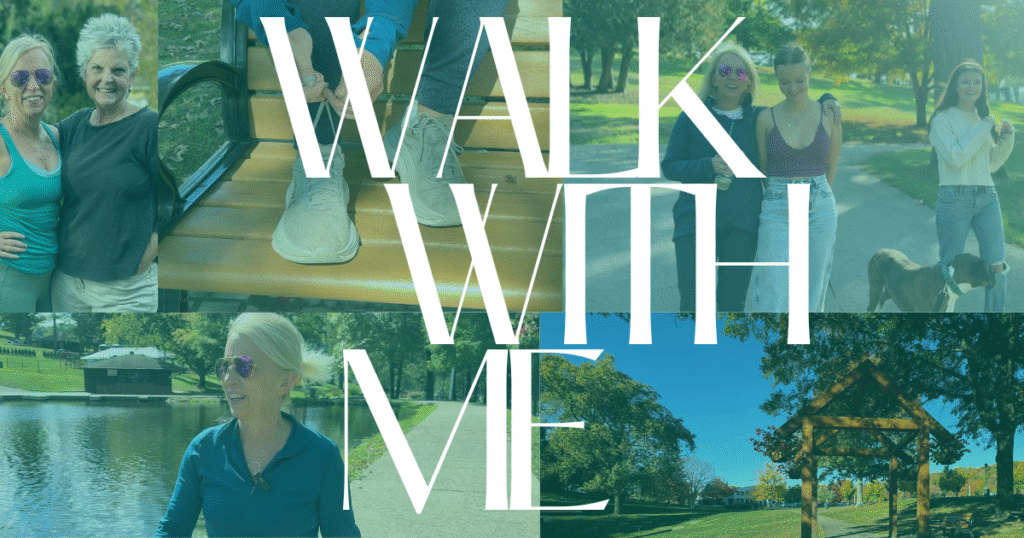
Liz: So now that I’ve done… I’ve actually done 30 walks, the last couple of people I’ve walked with were really really afraid to walk with me because they would tell me things they didn’t know if they wanted to talk about. So what is it about, or is it the EMDR that makes walking tap to. One gentleman said, I’ve never talked to anybody about my dad, and he talked to me a lot about his dad. Is that the EMDR at work, too?
Carole Ann: I think it’s you at work. So one of the things about, I think, even with the EMDR is you really have to have a sense of safety. Because we really heal from the inside out. And that’s what EMDR shows us, that we have to heal from the inside out.
Liz: So then I go back to what makes somebody like Francine come home from a walk and invent EMDR.
Carole Ann: It was the cancer and making herself the laboratory. She was her own experiment. It wasn’t anything external. She was careful, aware of looking at herself. She looked at how her eyes fluttered. She looked at herself in detail. She was just attentive to all parts of herself.
Liz: The attention to the little things.
Carole Ann: And it was about her. So I think it’s like when we tell our stories,
Liz: So it’s simple enough, let people tell their stories and love them unconditionally.
Carole Ann: Let them be who they are, whatever form that is.

Liz Hofreuter
Founder GEN-Ed
Not your typical researcher or consultant, Liz connects lived experience to transformative leadership. To uncomplicate leadership and education, every story matters and she is just getting started.


